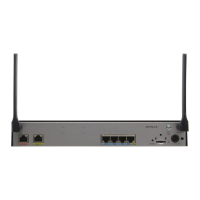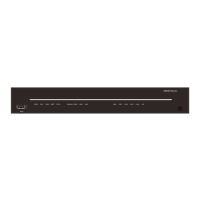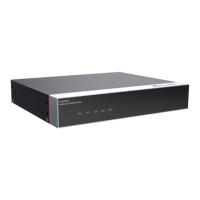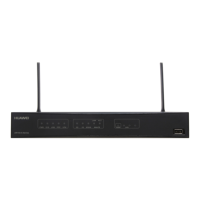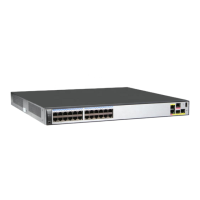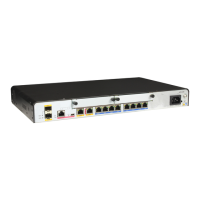2.4.4 Configuring a Bridge-if Interface for a Bridge Group
LANs on different network segments can communicate with each other by using a Bridge-if
interface.
Context
A Bridge-if interface is a virtual routed interface.
Interfaces in a bridge group can only bridge protocol packets within the bridge group. To allow
LANs on different network segments to communicate with each other, create a Bridge-if
interface for the bridge group to route the communication data.
Procedure
Step 1 Run:
system-view
The system view is displayed.
Step 2 Run:
interface bridge-if bridge-id
A Bridge-if interface is created and the Bridge-if interface view is displayed.
Step 3 Run:
ip address ip-address { mask | mask-length }
An IP address is configured for the Bridge-if interface.
Step 4 (Optional) Run:
mac-address mac-address
A MAC address is configured for the Bridge-if interface.
----End
2.4.5 Enabling IP Routing for a Bridge Group
A bridge group can route protocol packets after IP routing is enabled.
Context
IP routing enables a bridge group to bridge and route packets. If IP routing is not enabled, all
protocol packets can only be bridged. After IP routing is enabled, specified protocol packets can
be bridged or routed depending on the configuration.
Procedure
Step 1 Run:
system-view
The system view is displayed.
Step 2 Run:
bridge bridge-id
Huawei AR3200 Series Enterprise Routers
Configuration Guide - LAN 2 Transparent Bridging Configuration
Issue 02 (2012-03-30) Huawei Proprietary and Confidential
Copyright © Huawei Technologies Co., Ltd.
43

